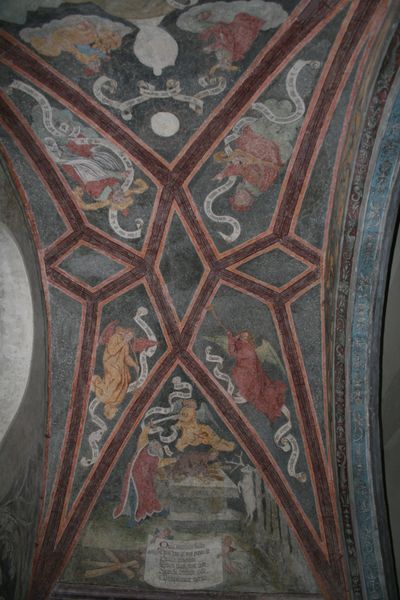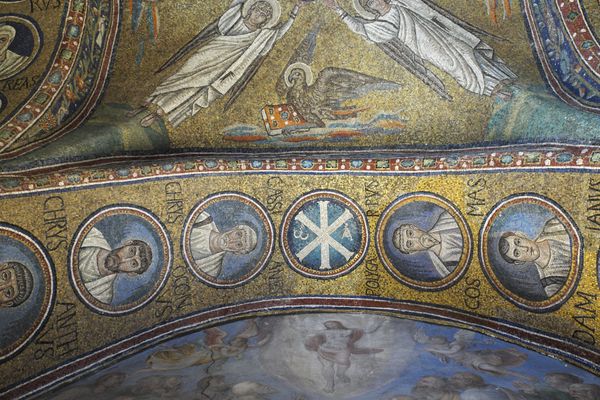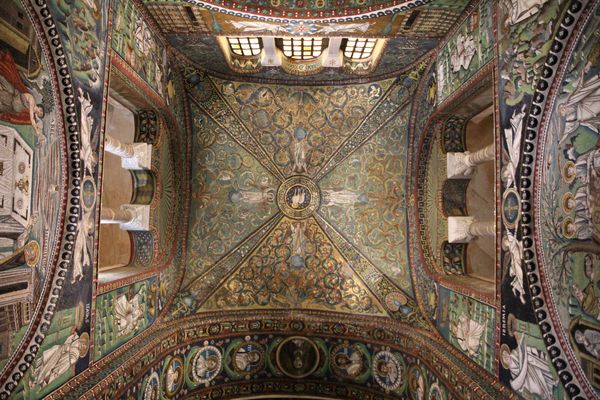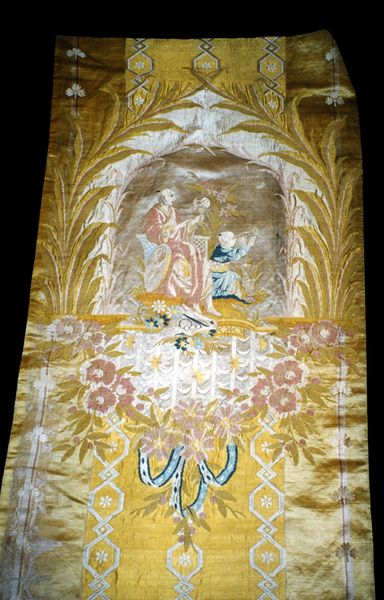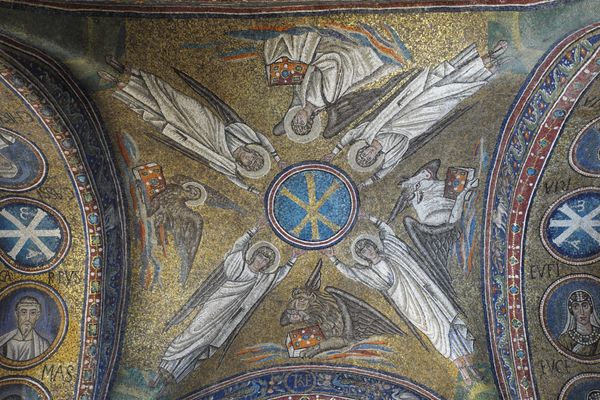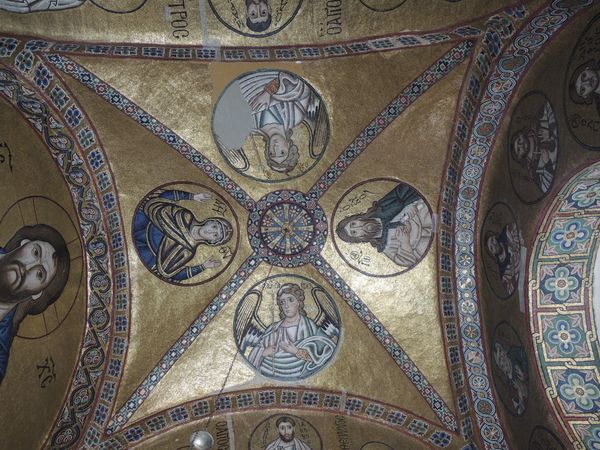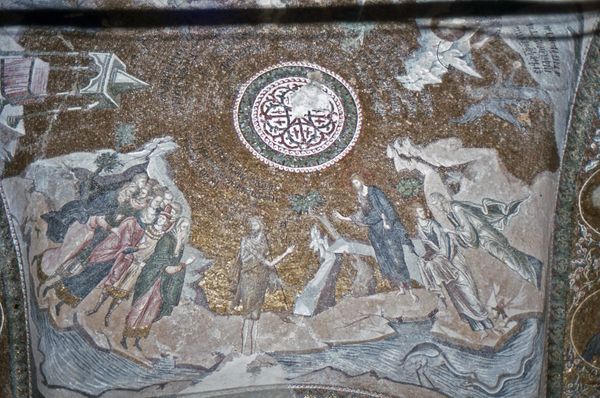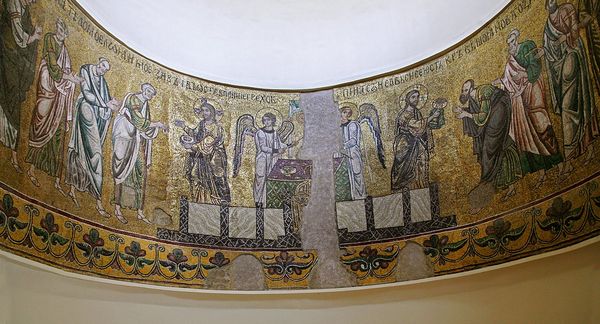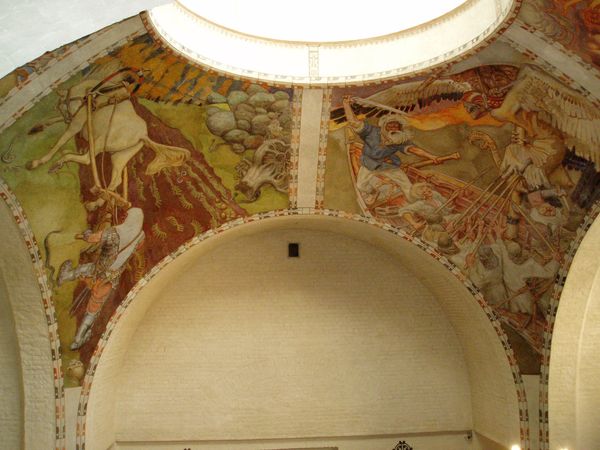
mosaic, fresco
#
mosaic
#
byzantine-art
#
medieval
#
sculpture
#
holy-places
#
figuration
#
fresco
#
building art
#
history-painting
Copyright: Public domain
Curator: Here, high above us in the Chora Church in Istanbul, is the 1320 mosaic, "Presentation of the Virgin." What strikes you about it first? Editor: It’s the scale, absolutely! The sheer dedication to crafting such intricate detail across such a vast, elevated surface is staggering. I can only imagine the collaborative effort of workshop production. Curator: Exactly! Mosaic work is labor-intensive, relying on skilled artisans shaping, setting, and polishing thousands of tesserae, those small pieces of glass or stone. Byzantine mosaics often used gold leaf behind glass to achieve that shimmering effect, reflecting not just light, but also imperial power. Editor: And consider what it signifies to place the female figure so centrally, and literally elevate it into such a dominant and expensive space. In presenting the Virgin, the piece makes a bold, albeit religiously framed, statement of cultural visibility during a period of Byzantine societal structure. The power dynamics here fascinate me! Who gets represented, and at what cost? Curator: Absolutely. And think about the relationship between the architectural space and the mosaic itself. The mosaic is not just an image, it's integrated with the building, responding to the light, and affecting the acoustics of the space. It demands a total sensory experience. The materials themselves also hold a symbolic weight. The permanence of stone and glass speak to an intention toward religious messages and material durability, and they would also represent the affluence of those that were patronizing this art. Editor: It’s truly an incredible thing when seen in relation to later mosaic traditions and also mural traditions more broadly. There's an ongoing conversation across time about whose stories are considered valuable enough to immortalize through labor. Curator: It really highlights how materials and processes are inherently interwoven with social values and cultural beliefs. Editor: This mosaic acts like a visual historical document, encoding narratives of power and belief within the very fibers of its material construction. Curator: I come away feeling a heightened awareness of how both tangible artmaking and theoretical discourse help to shape, represent and impact culture, literally embedded in these walls above us. Editor: Agreed. A fascinating lens through which to reflect on the politics of art and identity.
Comments
No comments
Be the first to comment and join the conversation on the ultimate creative platform.

